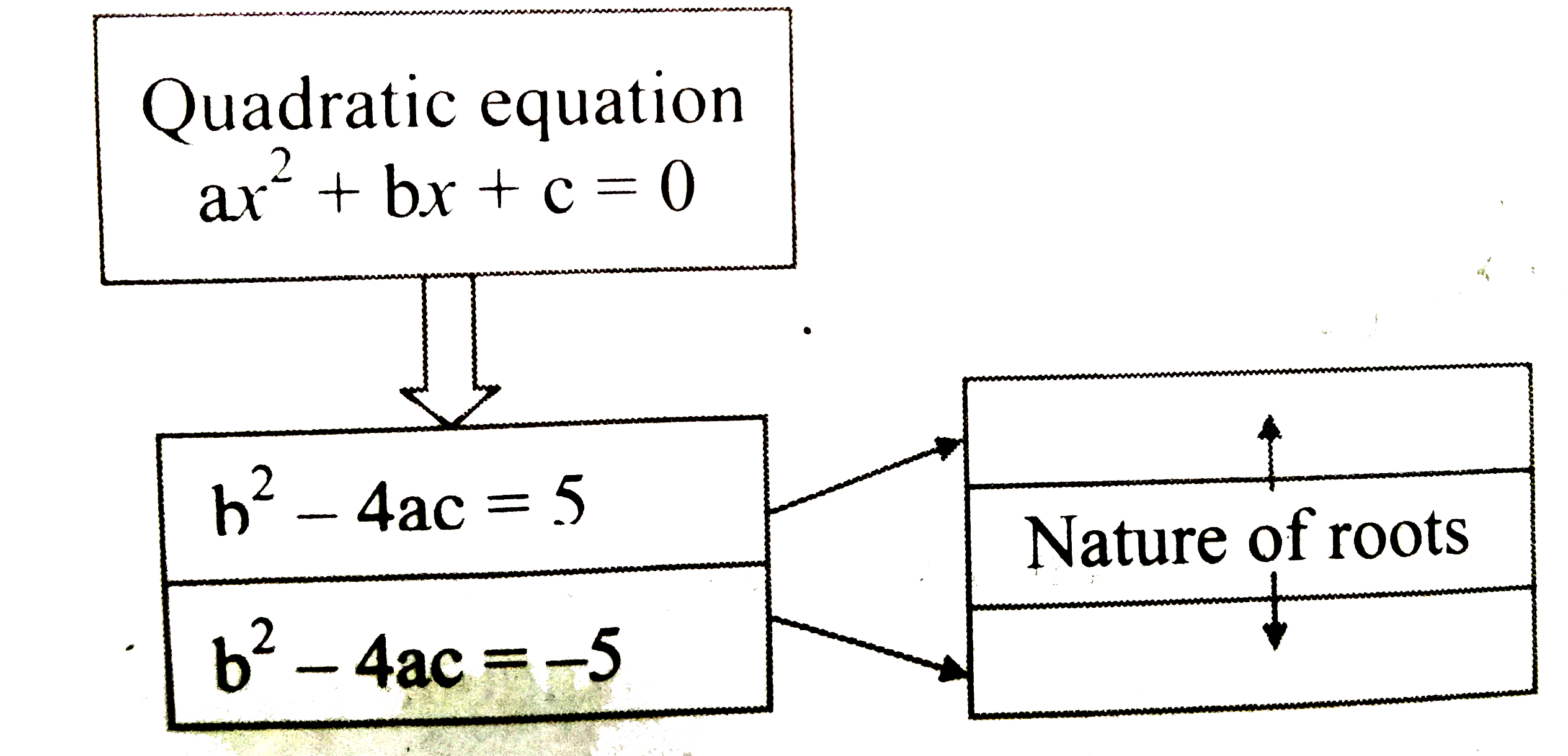Complete Solutions to Practice set 2.5 of chapter QUADRATIC EQUATIONS of Class 10 book with complete answers and questions
| Class 10 | MATHS |
| Chapter | QUADRATIC EQUATIONS |
| TARGET PUBLICATION | Practice set 2.5 |
| Number Of Questions | 36 |
| Academic Year | 2023-24 |
Fill in the gaps and complete.
(i)
View SolutionFill in the gaps and complete.
(ii)
View SolutionFill in the gaps and complete.
(iii)
View SolutionFind the value of discriminant.
`x^(2)+7x-1=0`
View SolutionFind the value of discriminant.
`2y^(2)-5y+10=0`
View SolutionFind the value of discriminant.
`sqrt(2)x^(2)+4x+2sqrt(2)=0`
View SolutionDetermine the nature of roots of the following quadratic equations.
`x^(2)-4x+4=0`
View SolutionDetermine the nature of roots of the following quadratic equations.
`2y^(2)-7y+2=0`
View SolutionDetermine the nature of roots of the following quadratic equations.
`m^(2)+2m+9=0`
View SolutionForm the quadratic equation from the roots given below.
0 and 4
View SolutionForm the quadratic equation from the roots given below.
3 and -10
View SolutionForm the quadratic equation from the roots given below.
`1/2` and `(-1)/2`
View SolutionForm the quadratic equation from the roots given below.
`2-sqrt(5)` and `2+sqrt(5)`
View SolutionSum of the roots of a quadratic equation is double their product.
Find k if equation is `x^(2)-4kx+k+3=0`.
View Solution`alpha, beta` are roots of `y^(2)-2y-7=0` find,
(i) `alpha^(2)+beta^(2) " (ii) " alpha^(3)+beta^(3)`
View Solution`alpha, beta` are roots of `y^(2)-2y-7=0` find,
(i) `alpha^(2)+beta^(2) " (ii) " alpha^(3)+beta^(3)`
View SolutionThe roots of the each of the following quadratic equations are real
and equal, find k.
`3y^(2)+ky+12=0`
View SolutionFor what value of k, are the roots of the quadratic equation
`kx (x-2) +6 = 0` equal ?
View SolutionFill in the gaps and complete.
(i)
View SolutionFill in the gaps and complete.
(ii)
View SolutionFill in the gaps and complete.
(iii)
View SolutionFind the value of discriminant.
(i) `x^2+7x-1=0`
View SolutionFind the value of discriminant.
(ii) `2y^2-5y+10=0`
View SolutionFind the value of discriminant.
(iii) `sqrt(2)x^2+4x+2sqrt(2)=0`
View SolutionDetermine the nature of roots of the following quadratic equations.
(i) `x^2-4x+4=0`
View SolutionDetermine the nature of roots of the following quadratic equations.
(ii) `2y^2-7y+2=0`
View SolutionDetermine the nature of roots of the following quadratic equations.
(iii)`m^2+2m+9=0`.
View SolutionForm the quadratic equation from the roots given below.
(i) 0 and 4
View SolutionForm the quadratic equation from the roots given below.
(ii)`3 and -10`
View SolutionForm the quadratic equation from the roots given below.
(iii) `1/2,1/2`
View SolutionForm the quadratic equation from the roots given below.
(iv)`2-sqrt(5),2+sqrt(5)`
View SolutionSum of the roots of a quadratic equation is double their product.
Find k if equation is `x^(2)-4kx+k+3=0`.
View Solution`alpha,beta` are roots of `y^2-2y-7=0` find,
(i) `alpha^2+beta^(2)` .
View Solution`alpha,beta` are roots of `y^2-2y-7=0` find,
(i) `alpha^2+beta^(2)` .
View SolutionThe roots of the each of the following quadratic equations are real
and equal, find k.
`3y^(2)+ky+12=0`
View SolutionThe roots of the following quadratic equation are real and equal. Find `k`. `kx(x-2)+6=0`
View Solution
Practice set 2.5 questions and complete solutions for chapter QUADRATIC EQUATIONS of TARGET PUBLICATION of Class 10
All Exercises from TARGET PUBLICATION Class 10 MATHS QUADRATIC EQUATIONS
- Additional problems for Practice : Based on practice set 2.1
- Additional problems for Practice : Based on Practice set 2.2
- Additional problems for Practice : Based on Practice set 2.3
- Additional problems for Practice : Based on Practice set 2.4
- Additional problems for Practice : Based on Practice set 2.5
- Additional problems for Practice : Based on Practice set 2.6
- Chapter Assessment
- Examples
- Multiple Choice Questions
- Practice set 2.1
- Practice set 2.2
- Practice set 2.3
- Practice set 2.4
- Practice set 2.5
- Practice set 2.6
- probelm set - 2
- Try this